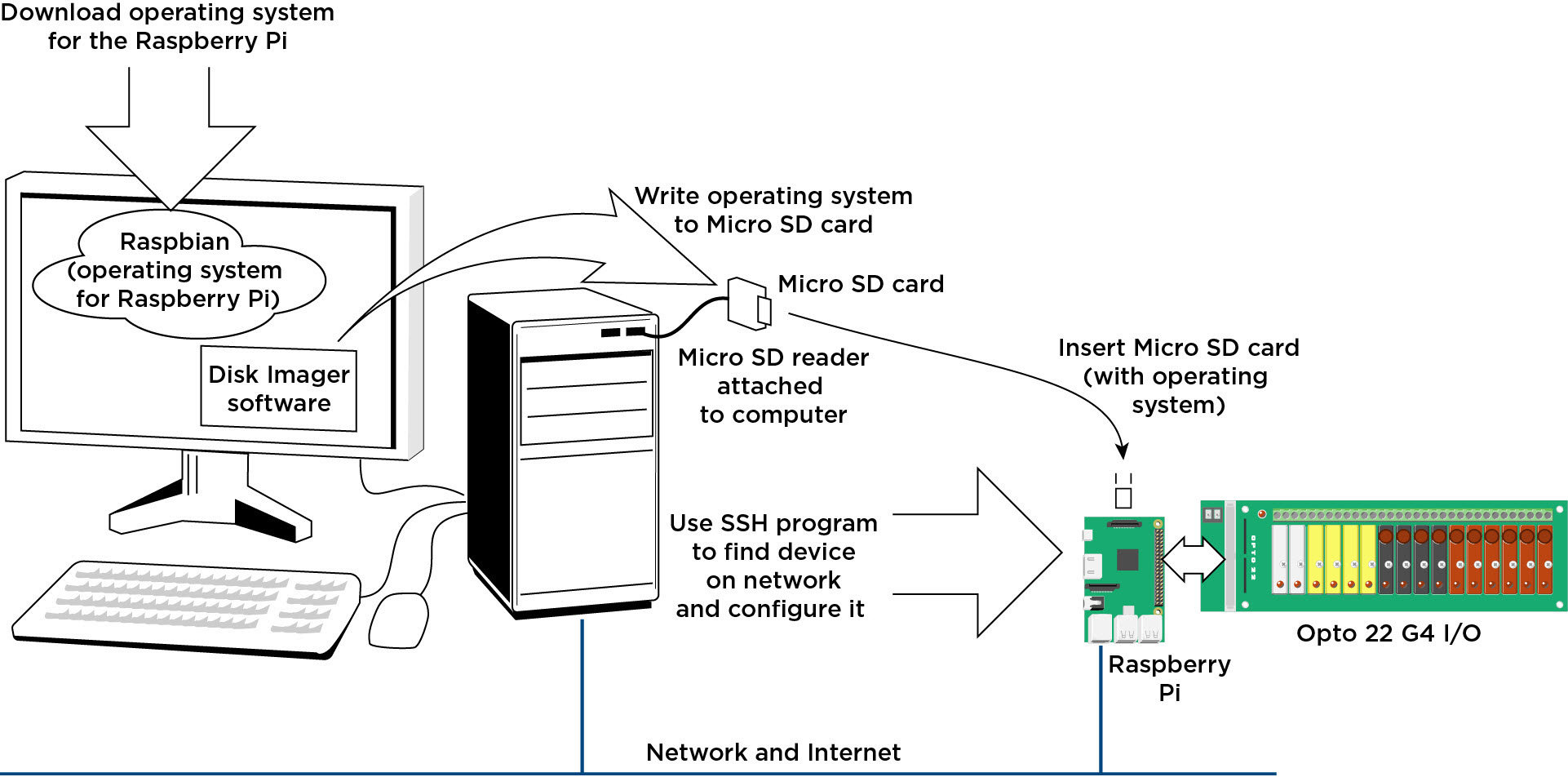Safely and reliably sense and switch 5-60 VDC, 120 VAC, and 240 VAC loads with a Raspberry Pi®

Raspberry Pi is a trademark of the Raspberry Pi Foundation.
Raspberry Pi, I/O modules, mounting rack, and power supply all sold separately.
With Opto 22’s Digital I/O Carrier Board for Raspberry Pi, you can use industrially hardened digital input/output (I/O) modules with your Raspberry Pi.
-
Use your Pi to switch industrial-level electrical loads far beyond the Pi’s built in 3.3 VDC GPIO pins.
-
Monitor and control electrical loads required for real-world devices like industrial motors, pumps, and sensors.
-
Perfect for prototyping, proofs of concept, and environments in which an industrially hardened controller isn’t required.
The Carrier Board works with any model Pi with a 40-pin header connector. Just insert the carrier board’s interface cable onto your Pi’s GPIO connector, and snap the board onto a compatible Opto 22 rack.
Use the rack’s power supply to power the Pi, and then use your favorite Pi-supported programming language to read and write to up to 16 digital I/O points.
Here’s What You Need
- A Raspberry Pi
- Digital I/O Carrier Board for Raspberry Pi (part OPTO-P1-40P)

What about Analog I/O?
Currently, the Pi Carrier board works only with Opto 22 and compatible digital-only racks that offer a 40-pin header, all from the on/off GPIO pins on your Pi.
However, the Pi Carrier board also exposes the remaining pins of the Pi’s 40-pin interface for access to the 1-wire, I2C, or SPI pins for compatible sensors or devices that offer more than on/off sensing and control.
In addition, Opto 22 offers a vast array of analog, serial, and special purpose modules with our SNAP Ethernet I/O system. Our software libraries, SDKs, and Node-RED nodes available on this developer site show how to programmatically access this I/O through the Ethernet port of the Pi.
Next Step
Continue to Pin-to-Module Mapping